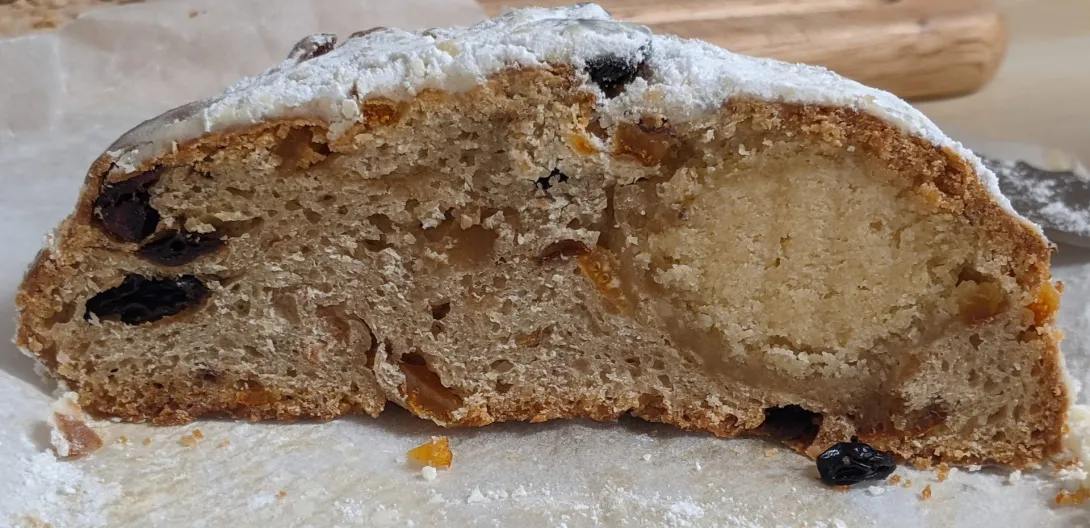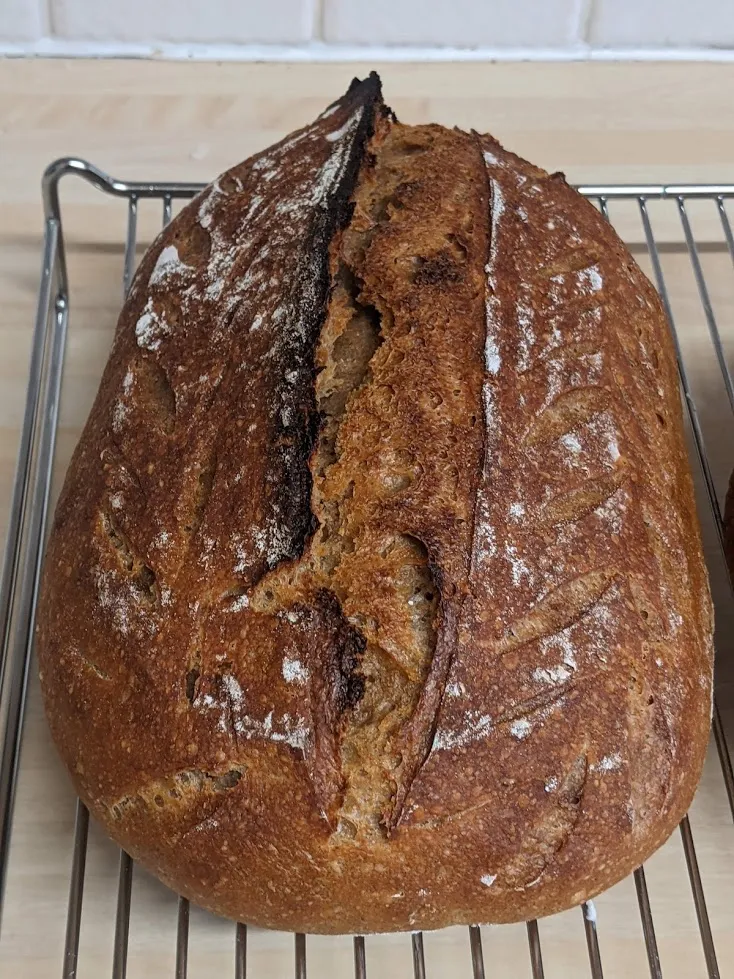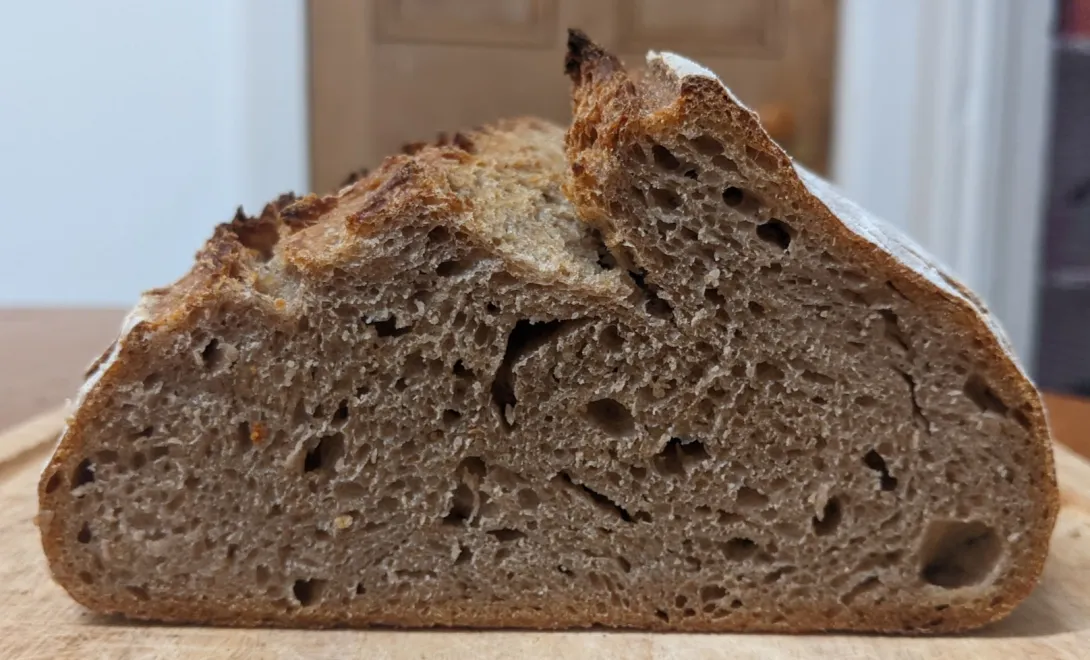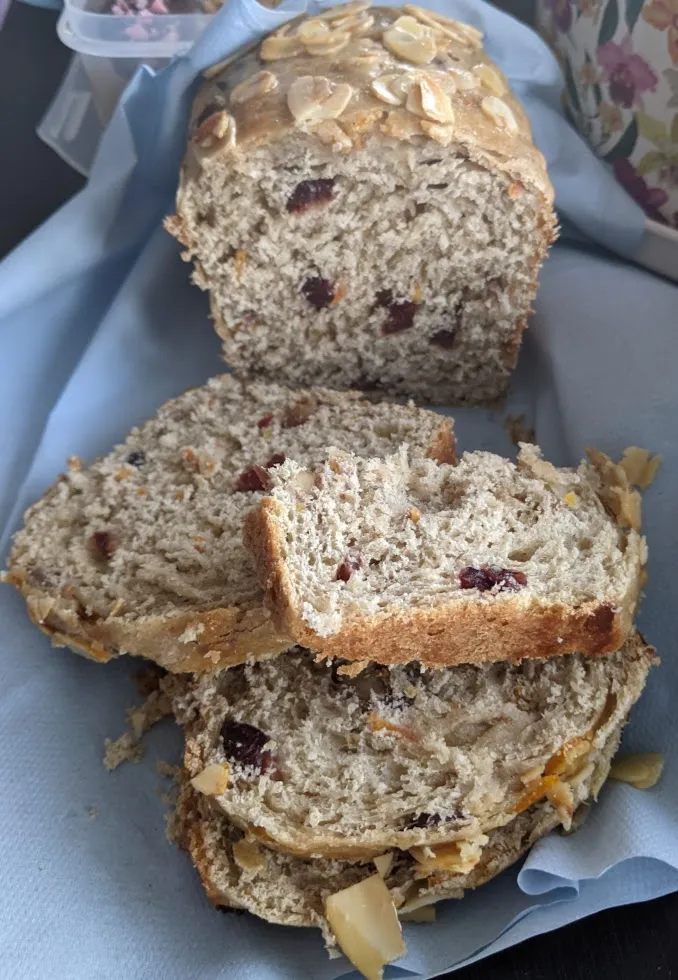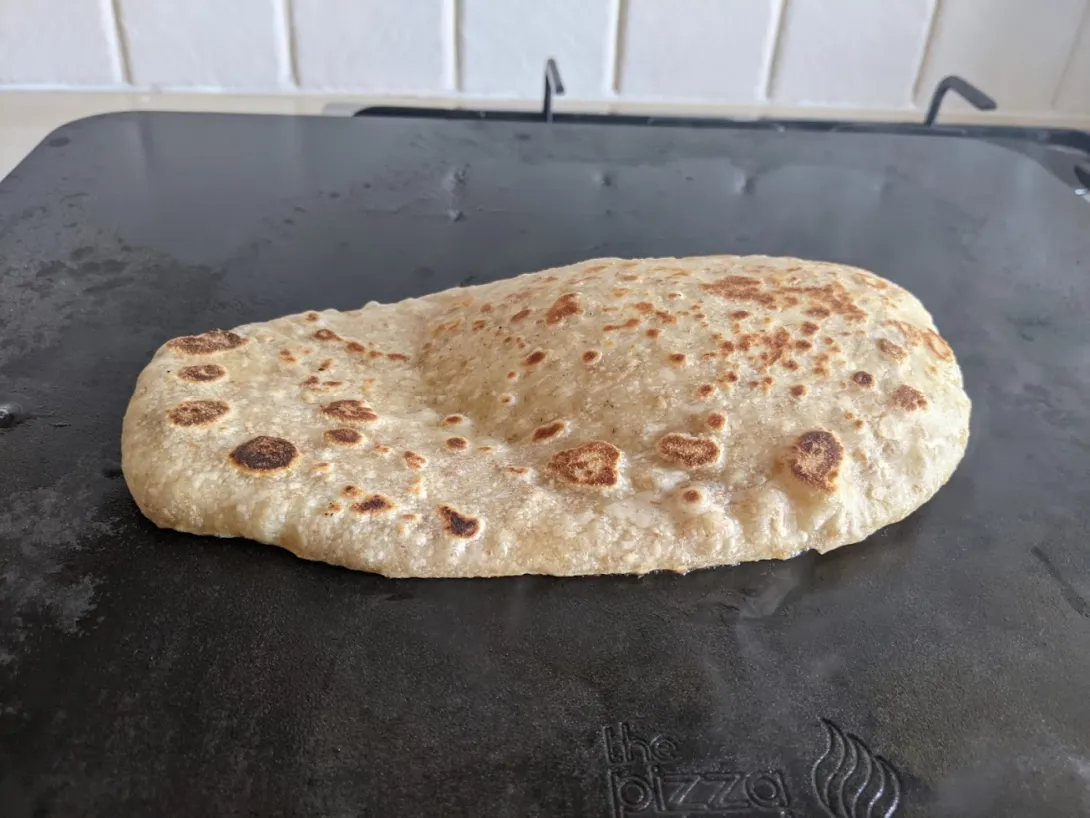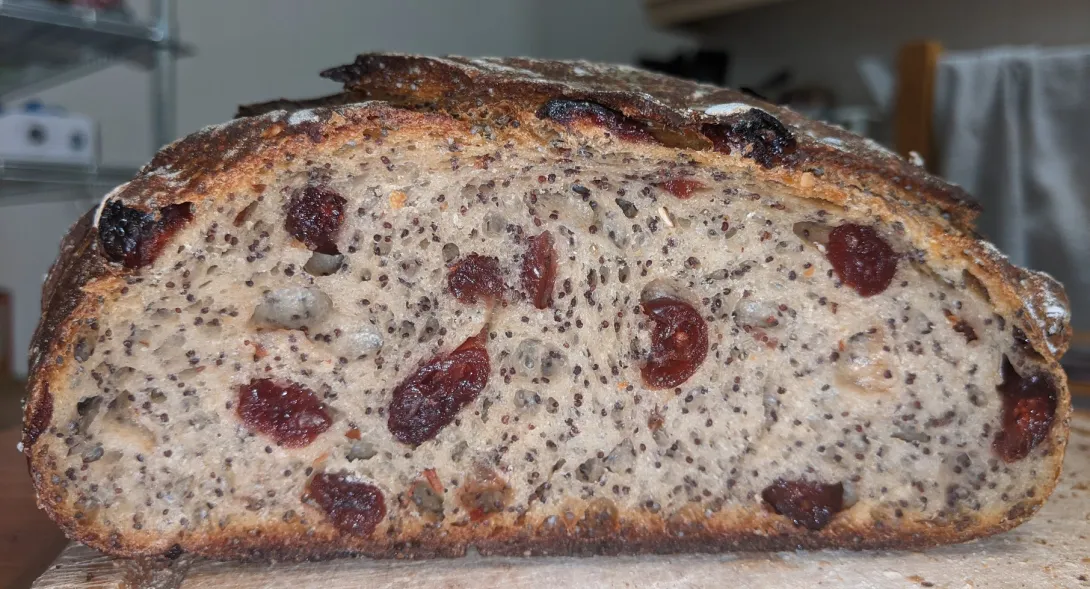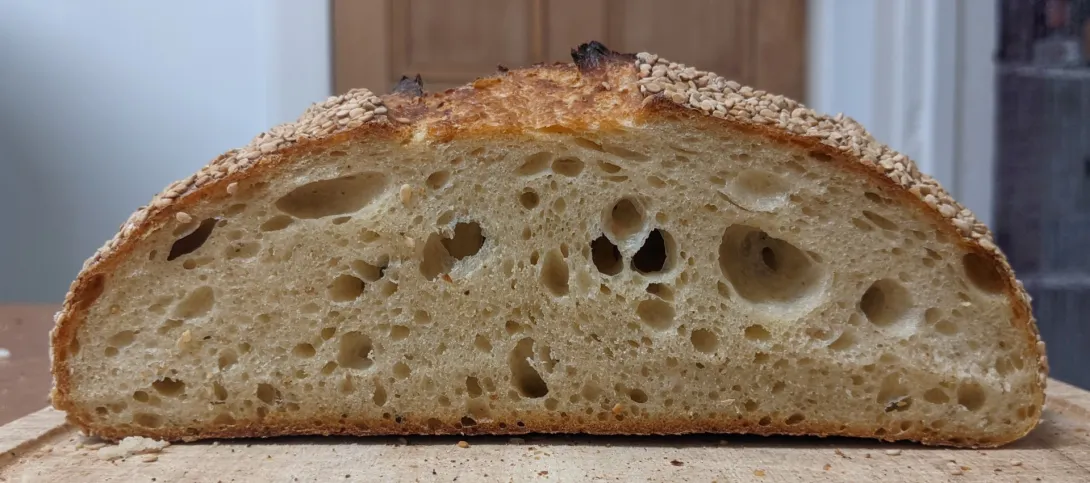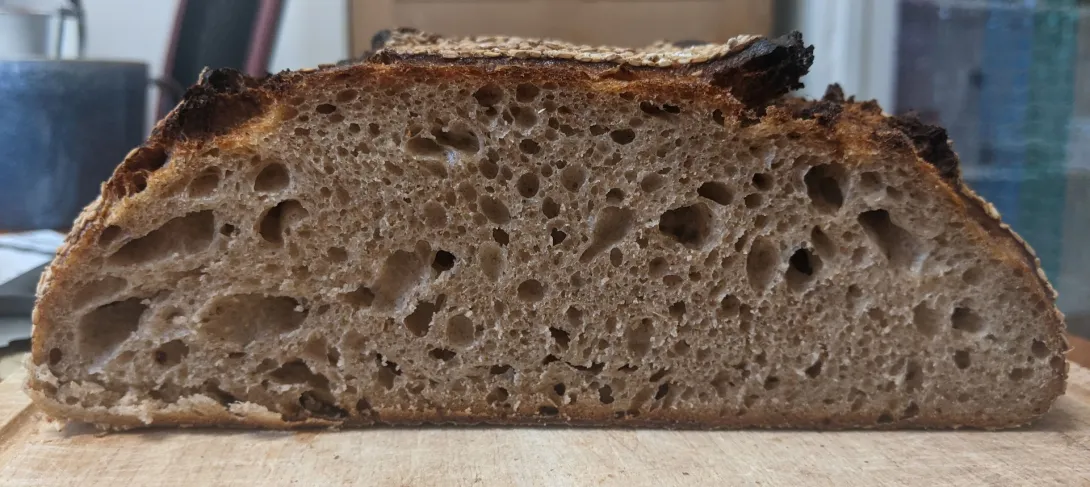The story of overfermented very simple sourdough
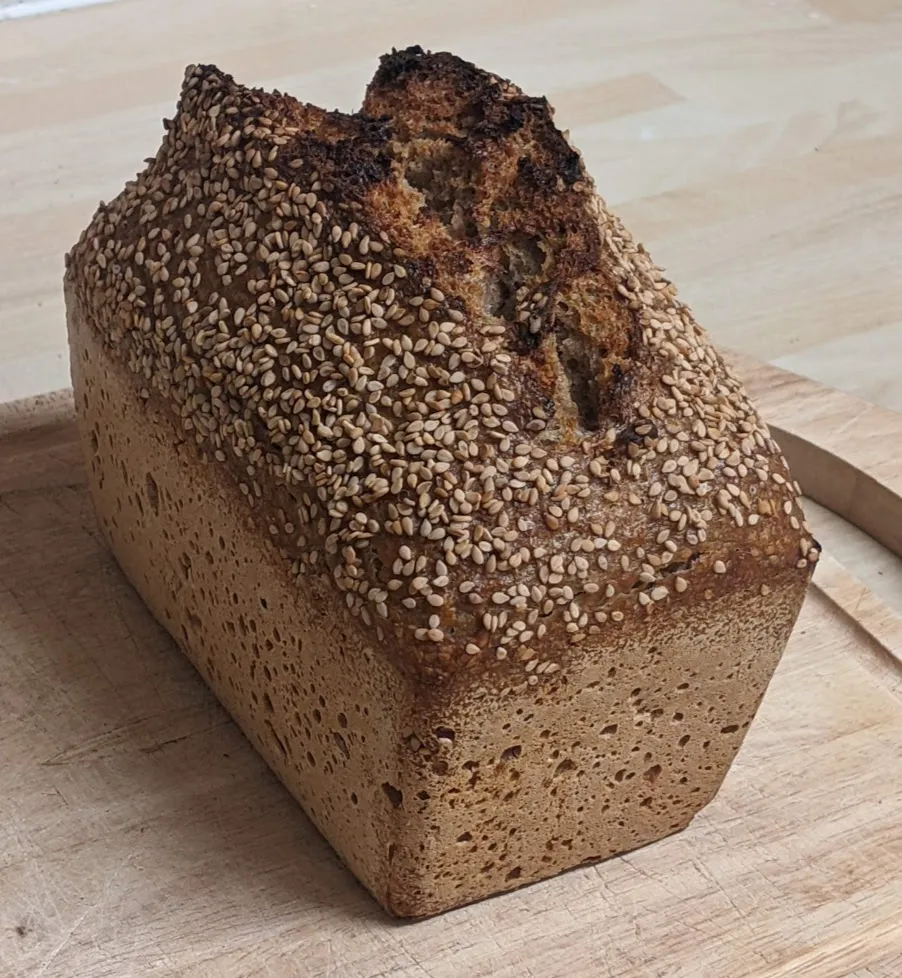
The holidays are playing all kinds of tricks with my baking schedule and thinking, so here is another salvaged near-flop.
My girlfriend's brother has been staying with us over the holidays, and when he was leaving yesterday I wanted to gift him a loaf of bread to take with him. But of course I didn't manage to plan it properly, and only could set up the very simple sourdough dough the night before, and spend minimal amount of hands-on time on it yesterday during the day.
